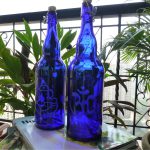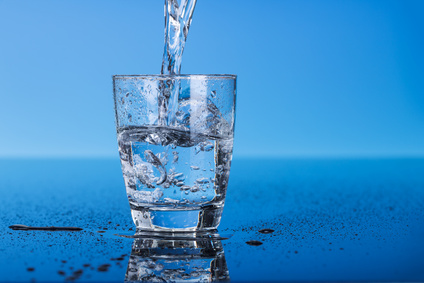We are two-thirds water and because water molecules are so small this means that 99% of our molecules are water. Your shoes are essentially carrying around a blob of water.” – Dr. Gerald Pollack
Facts & Figures
We all know the importance of drinking enough water in order to stay hydrated. Despite this knowledge, many of us don’t drink enough which can lead to several health problems.
Water is what keeps our cells, tissues, organs, joints etc. functioning properly. It is essential in maintaining our body temperature, for waste removal, joint lubrication, digestion of food, and other important functions. Blood for example is more than 80% water. So if we start running low on water, our blood starts to thicken. This puts pressure on the cardiac system to work harder plus less blood flows to your brain. That fuzzy, “can’t remember what I just said” feeling could very well have something to do with being dehydrated.
Other signs of being de-hydrated include darker, less frequent urine, dry mouth, thirst (which you might mistake for hunger), fatigue, nausea and headache. Once you start experiencing any of these symptoms, you have already waited to long to replenish your body and you need to hydrate immediately.
Chronic dehydration is even more dangerous and can lead to many more severe symptoms such as stress, depression, pains, anxiety, high blood pressure, high cholesterol levels, asthma, constipation, etc.
How much water do we really need?
We have all heard the general rule of thumb: drink at least 8 glasses of water a day. The keyword here is: “general.” 8 Glasses a day is an indication. A slightly more accurate rule is to drink half your ideal body weight (in lbs) in ounces of water. So, for example, if your ideal body weight is 60 kg, which is 132 lbs you need to drink 66 ounces of water which is 8 ¼ cups a day). However, it is important to note that everyone’s needs are different. How much water you need to drink in a day depends on a lot of different factors. Your body type, how much you exercise, in which climate you live, your stress levels, diet, medical condition, etc. are some examples. Being in tune with your body, something I actively teach clients, as it is an essential part of healthy living, will ensure that you know when you need to drink a glass of water.
A modern lifestyle dilemma and often more confusing question is:
What kind of water should we drink?
In Asia there tends to be very little choice. A couple of different bottled waters are available (mineral or distilled) and then there is the tap water, which requires filtration at home. In the U.S. where we lived for a number of years there were many different options. You could choose to drink tap water, bottled water (in plastic or even glass bottles), spring water, artisian water, mineral water, “living” water, alkaline water, distilled water, you name it. For home use there were many types of different water filter systems available so all in all: quite confusing.
Here is what I learned over the years:
1. Tap water
Tap water is water that has been treated, processed and disinfected. In certain parts of the world where rigorous filtering, water treatment and testing are not so well regulated, the potential presence of toxic chemicals and other substances is a serious problem. But even in the most developed parts of the world, regulations require testing only for a certain amount of compounds whereas there are over a hundred thousand potentially health damaging chemicals affecting our water supply globally. An article in National Geographic News stated: “Around the world, scientists are finding trace amounts of substances – from sugar and spice to heroin, rocket fuel, and birth control pills – that might be having unintended consequences for humans and wildlife alike.”
Additionally, the presence of chlorine which is used in the filtering and treatment process and fluoride which is often added to tap water is often a concern as both have been linked to cancer. A home filter system to further clean up and purify your water is therefore highly recommended, if possible.
Another downside to drinking tap water is that it has very little mineral content. Minerals are essential for health and mineral deficiency can lead to various health problems such as insulin resistance, high blood pressure, migraines, constipation, etc. These days, many people are found to be deficient in certain important minerals. High quality, mineral rich water enhances its potential and nutrient value on a cellular level.
2. Bottled water
Bottled water comes in many forms ranging from basic tap water that has been further treated and purified and / or distilled and is literally “dead” to spring water or artisan water, which is obtained at natural springs and has a higher level of naturally occurring minerals. The latter is obviously a better choice but no matter the type of bottled water we choose to buy, by regularly consuming our water from plastic bottles we are seriously contributing to environmental pollution. A better choice is to use glass bottled water that can be recycled but unfortunately those are not easily available.
Secondly, toxins from plastic bottles can leach into the water that we drink. Most of them contain Bisphenol A (BPA) and studies have shown that this chemical mimics estrogen levels, which promote human breast cancer cells and have also been shown to reduce sperm count in male rats.
Finally, the bottled water industry is often very poorly regulated. In many parts of the world, municipal water supplies are more strictly regulated in comparison.
Your best choice of water
Given the fact that our water supply has been contaminated (unless you are very fortunate and live near a source that provides clean, natural spring water**) you are going to have to make sure that your water is purified and filtered as much as possible. Here is what you can do:
1. Install a filter at home. In the U.S. we chose a reverse osmosis filter, which has been shown to be most effective at removing impurities. If you are living in Asia and you have the option to install a filter in your home, do some research to find out what your options are and which one is right for you.
2. Buy a re-usable water bottle that you can take with you, making sure that it is certified BPA free. Better even is to buy re-usable glass or stainless steel bottles. I found great bottles, especially for children on this website so if you have access to it, please check this out. (This company makes fantastic lunch boxes and other items by the way). If you must buy bottled water, choose the best quality, mineral rich water available.
3. Re-mineralize your water by adding a pinch of Himalayan Sea Salt or Celtic Sea salt or better even and my personal choice: add trace minerals. I personally like to use Concentrace Mineral Drops which I get from Wholefoods in the U.S.
4. Energize your water. Dr. Gerald Pollack whose quote is at the top of this article has done extensive research on the role of water in cell biology. His work demonstrates that there is a 4th phase of water, which is like liquid crystal. According to his revolutionary theories we can improve structure within water as well as energy production at a cellular level by exposing it to UV sunlight or infrared light. He suggests, based on the available research, that consuming water that has been structured as such may be of considerable health benefits. You can listen to his lectures here and here.
Another researcher who has been in the spotlight for his work with water is Dr. Masaru Emoto. In his book “The Hidden Messages in Water” he shows you how positive intention, words, music etc. actually improve water’s molecular structure. If this sounds far fetched to you, I highly recommend you read Dr. Emoto’s book.
 If you start digging into the science and research done on this topic you will begin to understand how there is more to water than you think. By simply pouring your purified and filtered, remineralized water into a glass bottle and energizing it by keeping it out in the sun for about an hour you will have increased its ability to hydrate at deeper levels. If, on top of this, you tape some positive messages on your bottle you might be further improving the quality of the water you drink.
If you start digging into the science and research done on this topic you will begin to understand how there is more to water than you think. By simply pouring your purified and filtered, remineralized water into a glass bottle and energizing it by keeping it out in the sun for about an hour you will have increased its ability to hydrate at deeper levels. If, on top of this, you tape some positive messages on your bottle you might be further improving the quality of the water you drink.
My own way of harnessing the most out of my drinking water is through these beautiful engraved blue glass bottles that I have at home and that I absolutely love, for the color, beautiful engravings and positive effect that they might have on the 8 glasses of water that I consume every day… You can find them here.
Other tips and tricks
- Start your day with a glass of warm water with or without a squeeze of lemon to hydrate first thing in the morning as well as flush out your system.
- Increase your intake of fresh fruits and vegetables to increase your water intake through food. Certain fruits and vegetables such as cucumbers and watermelon are especially rich in water.
- If you consume liquids such as coffee, black tea, alcohol, juices and soda you need to increase your water consumption as these liquids are dehydrating in nature.
- Never leave your house without a re-usable BPA free water bottle.
- Drink your water at room temperature. Never cold. It is too hard for your digestive fire to keep burning when it is continuously being doused with ice cold water…
- For intense hydration at a deep, cellular level, sip some hot water every 15 minutes or so in addition to drinking your basic daily requirement of half your ideal body weight in ounces.
- Infuse your water with flavors to change things up and make it more fun to hydrate. You can find some ideas for easy, delicious, flavor-infused water here.
Bottom Line: Bottoms up!
Be Well.
Monique
Resources:
“Primal Body, Primal Mind“– Nora T. Gedgaudas, CNS, CNT
http://www.marksdailyapple.com/8-glasses-of-water-a-day/#axzz2z8KcRF5Q


